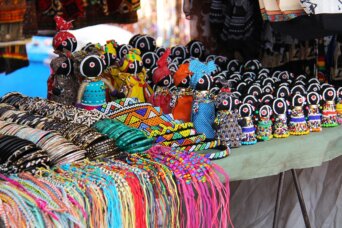- About
- Topics
- Picks
- Audio
- Story
- In-Depth
- Opinion
- News
- Donate
- Signup for our newsletterOur Editors' Best Picks.Send
Read, Debate: Engage.
| topic: | Xenophobia |
|---|---|
| located: | South Africa |
| editor: | Bob Koigi |
In a span of less than a month, two events have occurred in South Africa that have caught global attention while shining a spotlight on the long walk for the rainbow nation in tackling systemic racial and cultural prejudices.
A just-concluded investigation by the Digital Forensic Research Lab of the country has revealed that a Twitter account associated with an Indian South African woman that has been generating xenophobic hashtags and posting inflammatory statements that have sparked violence and killings over the years was a parody created by the disgraced former soldier Sifiso Jeffrey Gwala, who was attached to the South African National Defence Force.
The @uLerato_pillay account targeted over 60,000 followers, inciting them against foreigners with messages calling for South Africans to rise and reclaim their land. The investigations have rekindled the deep xenophobic attacks synonymous with South Africa and the history it has wished to put behind it. May 2008 remains one of the darkest months where 62 people died following weeks of nationwide riots against African foreigners that were occasioned by mass looting of businesses, forceful evictions and attacks. In April 2015, seven people were killed in resurgent attacks on African foreigners in Durban. This has always put the close to four million foreigners in South Africa on red alert as they continue to shoulder the ill-conceived blame of taking over locals' jobs.
And just recently an online hair care advertisement by pharmaceutical and beauty company Clicks sparked a nationwide furore and protests after it appeared to denigrate the black hair. Images of African hair were shown as "frizzy and dull", "dry and damaged" with white hair depicted as "normal", "fine and flat".
And although major local and international brands have removed the product from their stores and the management at Clicks apologised, the campaign has ignited painful memories of a black history under apartheid rule where the government of the day employed the Pencil test in deciding the race of South Africans, black or mixed, depending on how easily the pen could move through the hair.
Ironically, these two separate yet intertwined events – the microcosm of South Africa’s dark past, happened in the month South Africa celebrates The Heritage Day, a national fete meant to celebrate the tapestry of culture, people and the diversity of traditions that coalesce around the Ubuntu spirit-I am because we are.
As South Africa positions itself as a nation overflowing with a cocktail of cultures and home to diverse people, even as it battles with sporadic race and xenophobic incidences, now more than ever it needs an honest conversation with itself on how to confront the ghosts that continue to dent its heritage and kill the unity in the diversity dream that was espoused by its founding fathers. Only then will there be true heritage and the dawn of a new Mzansi.
Image by Sharon Ang

